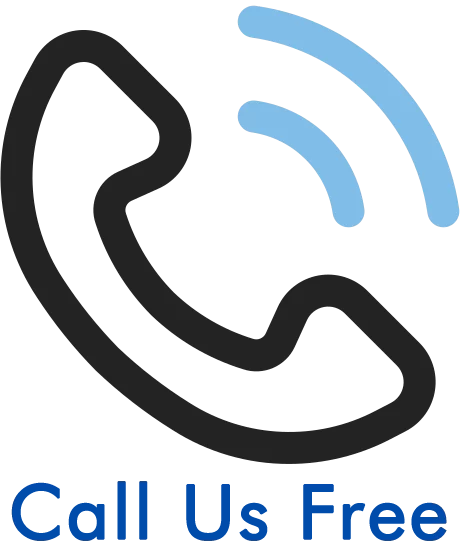Nightstick Fracture Compensation Claims In The UK
Have you suffered a nightstick fracture in your arm? Was it caused by an accident that wasn’t your fault? If so, you may be able to claim compensation for your injury.
If you suffer a broken arm injury, then that means you’ve fractured at least one of the bones in your arm. The fracture may specifically affect a bone in the forearm called the ulna. A fracture of this particular bone is known as a nightstick fracture. It can be caused by a wide range of accidents and can cause a lot of discomfort. Severe arm fractures can have a long-term or even permanent effect on your quality of life.
In this guide, we’ll explain how it may be possible to make a nightstick fracture compensation claim.
Get In Touch With Our Team
Need advice on making a nightstick fracture claim? You can contact UK Law for free specialist advice on this type of compensation claim. To contact us online, you can use our live chat service. Or you can use either our online claim form or our call back form. You can also speak to us on the phone by calling 020 3870 4868
Services And Information
- Everything You Need To Know About Nightstick Fracture Compensation Claims
- What Is A Nightstick Fracture?
- Anatomy Of The Ulna Bone
- Symptoms Of A Nightstick Fracture
- What Could Cause A Nightstick Fracture?
- Nightstick Fracture Compensation Calculator
- Nightstick Fracture Treatment
- What Happens If A Fracture Is Missed?
- Why Do Doctors Misdiagnose Fractures?
- Is There A Limitation Period For Starting A Claim?
- I Suffered A Nightstick Fracture, What Should I Do?
- No Win No Fee Nightstick Fracture Compensation Claims
- Contact Us For More Help
- Related Information
- FAQs Related To Nightstick Fractures
Everything You Need To Know About Nightstick Fracture Compensation Claims
A variety of different accidents can lead to injuries to your forearms, including a nightstick fracture. Examples include accidents in the workplace, accidents in public places, road traffic accidents and slips, trips and falls.
In some cases, a nightstick fracture can occur as a result of negligent behaviour from another party which owed you a duty of care. You may be able to receive compensation for your nightstick fracture if you can prove that someone breached their duty of care towards you and this breach contributed to your injury.
Read on to learn more about the process of gaining nightstick fracture compensation. We’ll also explain how this injury can occur and how it may be treated. We will also talk about what time limits and compensation payments may be applied to these kinds of claims. We’ll also discuss what may happen if you have a nightstick fracture which is misdiagnosed by a medical professional.
What Is A Nightstick Fracture?
A nightstick fracture is an isolated fracture of the ulna bone, which is located in the forearm. This type of fracture usually occurs when the ulna bone is subjected to a direct blow.
The name for this fracture refers to potential scenarios where someone uses their forearm to protect themself from an overhead blow delivered with a club or a similar type of weapon. Nightstick is one of many different terms applied to club weapons. Despite the origins of the name, a nightstick fracture can potentially happen in several different ways which doesn’t involve the use of a club or any other sort of weapon.
There are different ways a fracture to your ulna bone may be classified depending on how exactly it breaks:
- Avulsion fracture – A piece of bone detaches from the main bone
- Comminuted fracture – A bone has shattered into several pieces
- Complicated fracture – Structures near the injured bone (such as blood vessels) are also damaged
- Oblique fracture – Refers to a slanting fracture
- Open fracture – The broken bone is exposed or has punctured through the skin
- Simple fracture – The skin around the fractured bone is unaffected
- Spiral fracture – The fracture on the bone has a winding pattern
- Transverse fracture – A straight break across the bone
Greenstick vs nightstick fracture
A nightstick fracture is not to be confused with a greenstick fracture. The latter refers to injuries where a bone bends and cracks, but it does not break into separate pieces. A greenstick fracture is most likely to occur to children while their bones are softer compared to adults. A greenstick fracture can affect the ulna bone or other long bones within the arms or legs.
Anatomy Of The Ulna Bone
The forearm is made up of two bones. One is called the radius and the other is named the ulna. The ulna bone is further away from your thumb than the radius is. It is also larger at the elbow, whereas the radius is larger at the wrist.
The main motion of the forearm is rotation and both forearm bones are crucial in this movement. They allow us to turn our palms up or down. When you rotate one of your forearms, the ulna stays still and the radius rotates around it. This rotation motion allows us to complete certain tasks such as turning a doorknob or using a screwdriver.
If the ulna bone becomes fractured, then this can disrupt your ability to rotate your arm. Your ability to bend and straighten your wrist and elbow may also be affected.
Symptoms Of A Nightstick Fracture
A forearm injury usually causes a lot of pain, restricts your mobility and can create noticeable deformities too. If you experience any of the symptoms associated with a nightstick fracture (or other fractures in the forearm), then contact emergency services or visit a hospital as soon as possible. Symptoms of a fractured ulna bone can include the following:
- Bruising around the forearm
- Inability to rotate your arm
- Numbness or weakness in the wrist or fingers
- Swelling of the forearm
What Could Cause A Nightstick Fracture?
A nightstick fracture may occur when the ulna bone is subjected to a large amount of force or stress, which may be created by a direct blow. There are numerous kinds of accidents which can lead to forearm fractures including a nightstick fracture. Examples include:
- Accidents at work (such as an issue with work equipment).
- Road traffic accidents (such as a car crash or a cycling accident).
- Slips, trips and falls. These could happen at home, a public place or elsewhere.
- Sports injuries (direct blows on a sports field or court).
- You may develop a stress fracture in your forearm due to repetitive use or heavy use for an extended period of time.
Nightstick Fracture Compensation Calculator
You may have questions about how much money you could receive when making a nightstick fracture compensation claim. It ultimately depends on several factors. These include how severe your injury is and how much impact it has had on your quality of life.
You can view the table below to look at compensation brackets for injuries to the forearm. Compensation brackets are also included for injuries to the wrist and elbow, which may both be affected following your accident. The brackets come from the latest Judicial College guidelines and are based on payments given out for the listed injuries. Solicitors may use these brackets to help calculate the value of your injuries based on their severity.
| Injury | Severity | Compensation |
|---|---|---|
| Forearm Fractures | Severe | £36,770 to £56,180 |
| Forearm Fractures | Less Severe | £18,020 to £36,770 |
| Forearm Fractures | Simple Fracture | £6,190 to £18,020 |
| Elbow Injury | Severe and Disabling | £36,770 to £51,460 |
| Elbow Injury | Less Severe | £14,690 to £30,050 |
| Elbow Injury | Moderate or Minor | Up to £11,820 |
| Wrist Injury | Loss of Function | £44,690 to £56,180 |
| Wrist Injury | Some Permanent Disability | £11,820 to £22,990 |
| Wrist Injury | Recovery Is Complete But Lengthy | Rarely exceed £9,620 |
| Wrist Injury | Minor Fracture | £3,310 to £4,450 |
Compensation for injuries such as those listed above are considered payments for ‘general damages’. If you are able to receive compensation for general damages, you may also receive additional compensation for ‘special damages’. These types of damages refer to financial losses which were directly caused by your injuries.
Examples of financial losses which could be covered under special damages payments include the following:
- Any earnings you have lost because your injury has forced you to take unpaid time off work.
- Travel expenses put specifically towards receiving forearm fracture treatment.
- Loss of earning capacity if your injuries have forced you to take a different job which is lower paid than the one you had prior to your injuries.
Nightstick Fracture Treatment
If you go to a hospital with symptoms of a nightstick fracture, then a doctor will examine you and provide appropriate treatment. To confirm a fracture has occurred, your doctor will examine the symptoms you may have such as bruising, swelling or deformity of the arm. Your doctor will also likely ask about how the injury occurred.
An X-ray scan will likely be arranged by your doctor to examine your forearm. If a fracture has occurred in your forearm, then the X-ray can help to determine its location and the severity of the fracture. In some cases, a more detailed scan such as an MRI or CT scan may be arranged in order to get more detailed images of your injury.
Treatment usually includes receiving pain relief medication to reduce the discomfort caused by your injury. Your injured forearm may also be put in a brace, cast or sling to reduce its movement and encourage healing.
If your fracture is severe, then surgery may need to be carried out on your forearm to fix the ulna bone and any other broken bones nearby. A fixation device which includes screws and a plate may be required to hold bones in position and help with the healing process.
What Happens If A Fracture Is Missed?
A misdiagnosed nightstick fracture refers to any instance where a medical professional fails to properly identify this injury while it’s affecting you. When you see a medical professional about fracture symptoms, they may unfortunately mistake your fracture for a different issue. Or they may not discover the full extent of the damage to your forearm.
So they could, for instance, diagnose your issue as being less severe than it actually is. As a result, there may be an avoidable delay in getting the right treatment for your injury. The fracture could end up being aggravated before you receive the correct treatment.
Why Do Doctors Misdiagnose Fractures?
When visiting a medical expert or hospital about symptoms of a nightstick fracture, they may make certain mistakes while diagnosing your condition. A medical professional you visit is responsible for examining you, prescribing any treatments and referring you for additional tests if necessary. Should any of these stages be skipped or not carried out properly, then the medical professional looking at you could fail to diagnose your fracture properly. This could set you on an incorrect path for treatment.
Different ways a forearm fracture may end up misdiagnosed can include the following:
- Your symptoms may be confused for a different kind of injury.
- An X-ray may not have been offered when it could have confirmed your injury.
- You had an X-ray, but it was not done correctly or the results were misinterpreted.
- The medical professional examining you did not arrange for you to have an MRI or CT scan which could have provided useful info about your injury.
- Your diagnosis was affected by an administrative error at the hospital you’re at.
You may be able to claim compensation if you’ve been affected by a misdiagnosis of your nightstick fracture. To succeed with such a claim, you’ll need to prove that the medical professional who examined you acted negligently and breached their duty of care towards you during the misdiagnosis. You can contact UK Law for free legal advice if you have been affected by a nightstick fracture misdiagnosis.
Is There A Limitation Period For Starting A Claim?
The standard time limit for beginning a nightstick fracture compensation claim is usually three years from the day the accident which caused your injury occurred. However, in some cases, it may not have been possible to diagnose your fracture just after the accident. Therefore, the time limit may start from the day your injury was confirmed. This is known as the date of knowledge.
Under certain circumstances, the time limit may be frozen, at least on a temporary basis. For instance, if a child suffers a nightstick fracture, then the time limit for claiming does not start for them immediately. Instead, the three-year limit only begins when the child reaches the age of 18.
A child can not start a personal injury claim on their own. However, a representative known as a litigation friend may be able to start a claim on the child’s behalf. This representative could be someone close to the child, like a parent or guardian.
The time limit for claiming can also be put on hold if the victim lacks the mental capacity to act independently. Like with children, a claim may possibly be started on behalf of the victim by a litigation friend. If the victim later manages to recover enough mental capacity to act on their own behalf, then the three-year time limit will come into effect from the day this happens.
I Suffered A Nightstick Fracture, What Should I Do?
If you’ve suffered a nightstick fracture, then you should get yourself the medical treatment you require as soon as possible. Depending on how the fracture happened, you may want to claim against the party which caused your accident and injury. If you do, it is worthwhile getting evidence of your treatment. Evidence which could support your potential claim can include medical notes and discharge letters.
You’ll need evidence to prove not only your injuries but which also shows how another party breached their duty of care towards you. You’ll also need to establish a link between this breach and your injuries.
When you have sufficiently recovered from your injuries, you can start gathering other evidence to support your case. What other evidence may be available will depend on the circumstances of the incident which caused your fracture. Other potential evidence could include photos of the accident and your injury, witness contact details and security camera footage.
Once you’ve gathered the evidence available, you may then wish to get in touch with a solicitor who can support your claim. We recommend hiring a solicitor who has experience in handling fracture injury claims.
If your solicitor reviews your case and is happy to support it, you can then sign an agreement with them. From this point, your solicitor will guide you through all the remaining steps needed to process your claim. You’re welcome to contact UK Law if you have any questions about starting a nightstick fracture claim.
No Win No Fee Nightstick Fracture Compensation Claims
If you hire a solicitor to support your case, then you may sign a No Win No Fee agreement with them. This type of agreement can offer several financial benefits, such as the following:
- There’s no requirement to pay legal fees upfront to your solicitor.
- You also won’t need to pay legal fees during the process of your claim either.
- If your claim proves unsuccessful, then you will not be required to pay your solicitor’s legal fees. This gives your solicitor the motivation to work hard on your case, since they face extra risk.
If you win with your No Win No Fee claim, then a small percentage of your compensation will be deducted by your solicitor. They’ll do this in order to cover their legal fees, but the amount they can charge is capped by law.
Contact Us For More Help
You are welcome to contact UK Law now for advice on making a personal injury claim. We are here to help you if you have any queries about making a nightstick fracture compensation claim. You can contact us through the following methods:
- With our website’s online live chat service
- You can also use our claim online form
- To phone us instead, you can call us on 020 3870 4868
Related Information
If you are looking for more advice on fracture compensation claims, you can check out our related guides below:
We also have guides on different kinds of personal injury claims, such as the following:
FAQs Related To Nightstick Fractures
For this final section of our guide on nightstick fracture claims, we’ve answered some frequently asked questions.
How long does it take for a nightstick fracture to heal?
The amount of time it takes for a nightstick fracture to heal will largely depend on how severe the injury is. Healing typically occurs over the course of 2 to 3 months.
How much can I claim for a broken arm?
How much compensation you could claim for a fractured arm injury varies a lot. It depends on several factors such as the extent of your injuries and the impact they’ve had on your life.
Why is it called a nightstick fracture?
The term nightstick fracture is applied to fractures which specifically affect one of the bones in the forearm called the ulna bone. This particular type of fracture commonly occurs when the bone is hit with direct force by a blunt object.
How to claim for another person
In certain circumstances, you may be able to claim on behalf of someone else who has a nightstick fracture. A litigation friend may be able to claim for either a child with this injury, or someone who lacks the mental capacity to act on their own behalf. Depending on the circumstances, you may have to apply to be a litigation friend. Alternatively, a court may appoint you to represent the injured party.
Thank you for reading our guide on making a nightstick fracture compensation claim.
Writer PL
Checked by EI.







